Camera controls (and II): diaphragm and shutter
Diaphragm
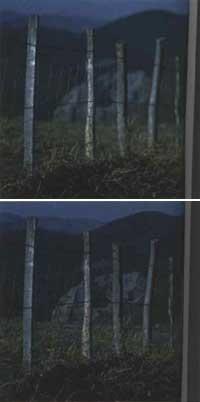
In a camera you can control the light that reaches the film in two ways: illuminating or darkening the image with the variable opening behind the lens and changing the duration of the light that reaches the film with a adjustable shutter.
This variable aperture, as a diaphragm we already commented on the previous occasion. To photograph a dark subject, the diaphragm will need to be expanded to bring as much light as possible. In case of being very illuminated, the opening must be reduced. In this way a similar result is obtained in both photos, since the film has had the same exposure.
The diaphragm control ring carries a scale of "f numbers". Each number represents half the light of the previous or double the next.
The "f numbers" represent each position of the diaphragm. However, instead of indicating the diameter of the diaphragm opening, they are the ratio between each diameter and the focal length.
This measuring system ensures that, with any objective, the same amount of light is inserted into a certain diaphragm. This way, once the objectives have been modified, no exposure problems will occur. The larger the number, the smaller the opening. The smallest number of the scale, that is, the greater aperture of the target, in this normal objective is f2 i nguru.
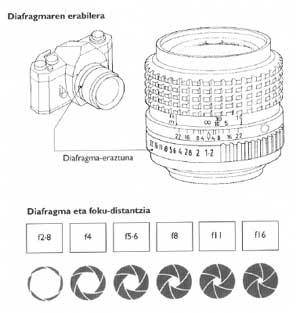
Shutter
In addition to the diaphragm, there is another way to control the light that reaches the film: the shutter.
The job is to decide not only the duration of the light that will come to the film, that is, the amount of light, but also the moment when the light enters.
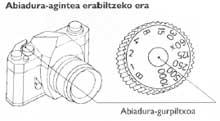
Another camera knob (rings or wheels) carries a scale of shutter speeds. Simple cameras have a single speed shutter or three or four speeds represented with weather symbols.
This scale represents the second and the second fractions. As in the "f numbers", each number indicates half the exposure time of the previous or twice the next. This common feature is important as it allows to perform the combinations that we will analyze later. At position B, the shutter remains open while the shutter is pressed.
Shutter speed not only affects exposure. It also depends on how moving objects will come out. In the second section we saw that there were two types of shutters. The central or plate is usually made up of direct viewfinder cameras.
This type of shutters is objective and light does not reach until the time of exposure. SLRs have focal plane. In them it is placed in the body of the camera, right in front of the film. This system allows you to change the lens without risk of black film. It consists of two curtains that pass successively during the exhibition.
The speed control modifies the distance between the two, less distance, less exposure time. On the other hand, many cameras carry a car trigger. With it the button is pressed and between 10 and 30 seconds the shutter does not open. It is very useful for self-portraits or when the photographer wants to go out in the group photos. It can also be used when there is a risk that the camera will move when taking the photo, as possible movement can be avoided with those seconds.

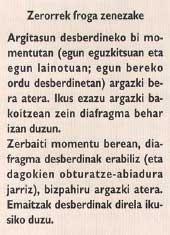
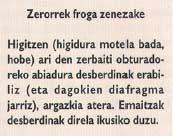
Buletina
Bidali zure helbide elektronikoa eta jaso asteroko buletina zure sarrera-ontzian











